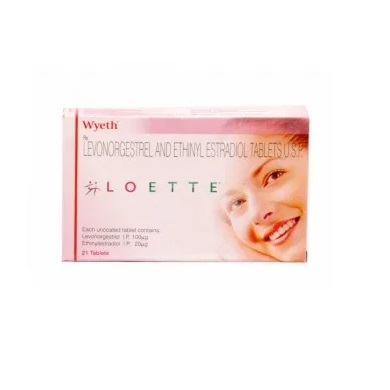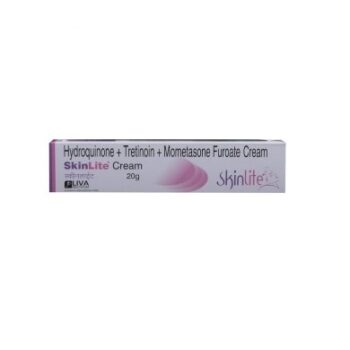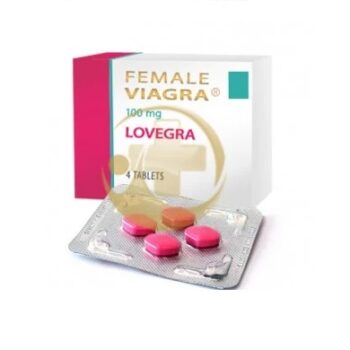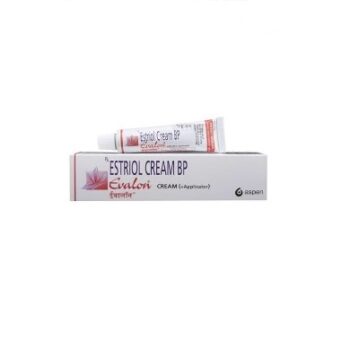Loette 100 ug+20 ug
Loette 100 ug+20 ug is a combined oral contraceptive pill that contains two active ingredients: levonorgestrel (a progestin) at a dose of 100 micrograms and ethinylestradiol (an estrogen) at a dose of 20 micrograms.
It’s commonly used as a birth control method to prevent pregnancy by inhibiting ovulation, thickening cervical mucus to prevent sperm from reaching an egg, and altering the uterine lining to make it less receptive to implantation.
As with any medication, it’s important to take Loette as prescribed by a healthcare professional and to be aware of potential side effects or contraindications.
Uses
Loette 100 ug+20 ug, a combination birth control pill, is primarily used to prevent pregnancy by inhibiting ovulation (the release of an egg from the ovary), thickening cervical mucus to block sperm, and altering the uterine lining to discourage the implantation of a fertilized egg. Additionally, it may help regulate menstrual cycles, reduce menstrual cramps, and make periods lighter and more regular.
How to use Levonorgestrel and Ethinylestradiol?
Take one tablet of Levonorgestrel and Ethinylestradiol daily at the same time each day for 21 days, followed by a 7-day break. Start the next pack after the break. Follow the arrow on the pack for the daily sequence. Consult a healthcare professional for guidance.
How does Loette 100 ug+20 ug(Levonorgestrel and Ethinylestradiol) work?
Loette works by combining two synthetic hormones: levonorgestrel (a progestin) and ethinylestradiol (an estrogen). These hormones mimic the effects of natural hormones in a woman’s body.
The progestin (levonorgestrel) primarily works by inhibiting ovulation, which means it prevents the release of an egg from the ovary. This prevents the egg from meeting sperm for fertilization.
The estrogen (ethinylestradiol) helps in two ways: it supports the effectiveness of the progestin in preventing ovulation, and it also thickens cervical mucus, making it harder for sperm to reach an egg.
Additionally, the combination of hormones in Loette alters the lining of the uterus, making it less suitable for the implantation of a fertilized egg. These actions combined significantly reduce the chances of pregnancy when taken correctly according to the prescribed regimen.
Benefits
Using Levonorgestrel and Ethinylestradiol (Loette) as prescribed can provide several benefits:
- Contraception: Effective prevention of pregnancy when taken correctly.
- Regulated Menstrual Cycles: Can help regulate periods, reducing irregularities.
- Lighter Periods: This may lead to lighter and less painful menstrual flow.
- Reduced Menstrual Cramps: Can alleviate menstrual pain and cramping.
- Improved Acne: Some users may experience clearer skin as a secondary benefit. Always consult a healthcare professional for personalized advice and to understand potential risks.
Side Effects
Side effects of Levonorgestrel and Ethinylestradiol (Loette) can include:
- Nausea: Feeling sick or queasy.
- Headaches: Mild to severe headaches.
- Breast Tenderness: Sensitivity or discomfort in the breasts.
- Spotting Between Periods: Light bleeding or spotting.
- Mood Changes: Emotional shifts or mood swings.
- Weight Changes: Slight weight gain or loss.
- Changes in Libido: Variations in sexual desire.
- Skin Changes: Possible changes in skin conditions, such as acne.
- Vaginal Discharge: Some may experience changes in vaginal secretions.
- Potential Blood Clot Risk: Rare but serious; seek immediate medical attention for symptoms like chest pain, leg swelling, or sudden shortness of breath.
Precautions
Before using Levonorgestrel and Ethinylestradiol (Loette), consider the following precautions:
- Medical History: Inform your healthcare provider about your medical history, especially any history of blood clots, stroke, heart disease, liver problems, or breast cancer.
- Allergies: Disclose any known allergies to medications, especially to hormones or any components of Loette 100 ug+20 ug.
- Smoking: Avoid smoking while using it, especially if you are over 35, as it may increase the risk of blood clots.
- Interactions: Discuss other medications, supplements, or herbal products you are taking, as they may interact with Loette 100 ug+20 ug.
- Pregnancy: Do not use if pregnant. If pregnancy is suspected, discontinue use and consult a healthcare professional.
- Breastfeeding: Consult a healthcare provider before using while breastfeeding.
- Blood Pressure: Monitor blood pressure regularly, as hormonal contraceptives can affect blood pressure.
Frequently Asked Questions
What is Loette used for?
Loette is an oral contraceptive pill used to prevent pregnancy. It may also help regulate menstrual cycles and reduce period pain.
How does Loette work?
Loette contains levonorgestrel (100 µg) and ethinylestradiol (20 µg), which prevent ovulation, thicken cervical mucus, and alter the uterine lining, making pregnancy unlikely.
How should I take Loette?
Take one pill daily at the same time each day, following the sequence on the blister pack. Start a new pack immediately after finishing the previous one.
Can Loette help with acne?
Yes, Loette may improve mild acne in some women by regulating hormones, though it is not its primary use.
What should I do if I miss a dose?
If you miss a pill, take it as soon as you remember. If it’s close to your next dose, take two pills at once. Use backup contraception if advised.
Can Loette be used by everyone?
No, Loette is not suitable for women with a history of blood clots, certain cancers, or uncontrolled hypertension. Always consult your doctor before starting.
Are there any side effects?
Common side effects include nausea, headache, breast tenderness, and mood changes. Severe side effects, like blood clots, are rare but require immediate medical attention.
Can Loette be taken during breastfeeding?
Loette is not recommended during breastfeeding, as it may reduce milk production and pass hormones to the baby. Consult your doctor for alternatives.
Conclusion
Levonorgestrel and Ethinylestradiol (Loette) is a combined oral contraceptive pill effective in preventing pregnancy by inhibiting ovulation, thickening cervical mucus, and altering the uterine lining. While offering benefits like regulated periods and reduced menstrual discomfort, it may cause side effects and interactions.
Adhering to prescribed usage, discussing medical history and medications with a healthcare provider, and staying vigilant for potential side effects can ensure the safe and effective use of Loette. Regular check-ups and following healthcare provider advice are crucial for optimal usage.











Reviews
There are no reviews yet.